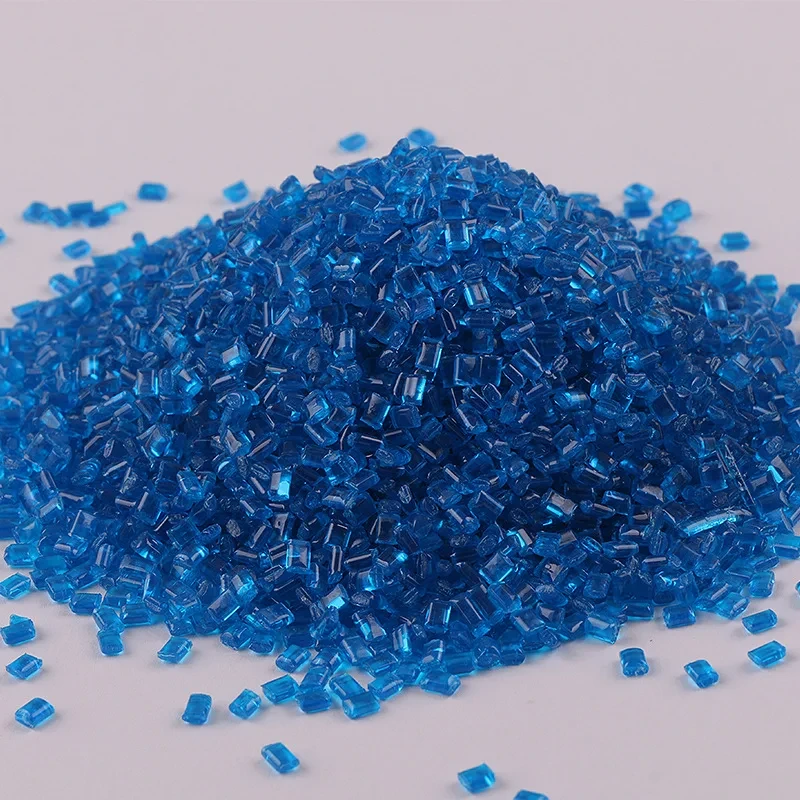Erreur de format d'e-mail
emailCannotEmpty
emailDoesExist
pwdLetterLimtTip
inconsistentPwd
pwdLetterLimtTip
inconsistentPwd

Offer Technical Support and Customized Solutions
The company is committed to creating new and improved plastic materials to meet the evolving demands of the market.

Global ABS Market Sales Set to Reach $38 Billion with 6% Annual Growth Rate
The global ABS (Acrylonitrile Butadiene Styrene) market sales are projected to reach $38 billion by 2024, with a compound annual growth rate of 6.0%, according to the latest report released by the market research firm Global Market Insights.
The potential growth in sectors such as household appliances, electronics, automotive, and construction will drive the rapid development of the ABS market.
ABS Plastic Applications Summary
In 2015, the proportion of ABS demand in different markets in China.
Household appliances dominate
In 2015, global household appliance ABS usage accounted for over 30%, dominating the market. The increase in urbanization and household appliance consumption is one of the main factors driving the surge in demand for ABS, as ABS plastic offers high design flexibility, lightweight, low cost, corrosion resistance, heat resistance, high flame retardancy, attractive appearance, and excellent mechanical properties. The expansion of the global household appliance industry in the future will create favorable conditions for the growth of the ABS market.
By 2024, the compound annual growth rate of the ABS market in the electronics industry will exceed 3.5%. Consumer lifestyle improvements and increasing purchasing power are the main factors driving growth in this sector. The demand for materials resistant to high temperatures and corrosion in products such as computers, computer peripherals, commercial machines, and electronic devices is continuously increasing, contributing to the growth of ABS demand.
Better electrical insulation performance is a significant characteristic that enhances ABS's share in the electrical and electronic fields. It also offers surfaces with high hardness and gloss, widely used in various appliances, including televisions, printers, and computers.
Increased automobile production will promote market growth
In 2015, the proportion of ABS used in automobiles globally exceeded 30%. It is estimated that by 2024, the compound annual growth rate of the global automotive ABS market will be 4%, with an increase of 2.1 million tons, widely used in automotive components such as body parts, dashboards, bumpers, body covers, steering wheels, and tires.
The trend of reducing vehicle weight to improve fuel efficiency is a major driving factor for the widespread adoption of ABS in automobiles. Furthermore, the continuous increase in automobile production will further promote the growth of the ABS market.
Bright prospects in the construction industry in developing countries
ABS is widely used in plastic sheets, pipes, and fittings for construction. The increase in per capita disposable income and the growth of construction spending in developing countries are key factors in industrial growth. In 2015, the construction industry in the Asia-Pacific region had an output value of over $1.55 trillion, expected to maintain a compound annual growth rate of 5% by 2024. In the future, construction experts will focus on lightweight, high-strength, and flame-retardant materials, leading to a surge in the ABS market in this sector.
ABS has replaced an increasing number of traditional materials in recent years due to its convenience of manufacture and low price. Additionally, the significant reduction in the use of steel in the manufacturing industry due to increasing demands for appearance, along with the growing color requirements from different end-users, is one of the main factors driving ABS market growth.
However, the industry also faces concerns as several countries will introduce regulations on biodegradable and non-renewable materials in the coming years, which may hinder the growth of the ABS industry.
National and regional growth trends
Driven by the growth in the automotive industry and demand for electronic products, the U.S. ABS market will exceed $3 billion in 2024. High demand from industries such as chemicals, polymers, and manufacturing will lead to ABS demand growth, and product innovation in consumer goods will drive market demand. Recent shifts in production trends have led to a decrease in the production capacity of ABS manufacturers, resulting in increased imports by major manufacturing companies.
In 2015, markets dominated by China and India produced over 6.6 million tons of ABS. The Asia-Pacific region is the major contributor to the ABS market, accounting for over 68% of the global ABS market share. The growth in demand for automotive, construction, electronics, and consumer goods industries driven by rapid population and income growth trends will boost ABS demand.
By 2024, Europe, led by Germany, France, the UK, and Russia, will have a compound annual growth rate of over 6% in the ABS market. Europe is a major automotive manufacturing region globally, and stringent regulations to reduce car weight to lower carbon emissions will be one of the main factors driving ABS market growth.
Taking Germany as an example, in 2024, ABS sales in the household appliance industry in Germany alone will exceed $225 million. Increased consumption of fax machines, refrigerator liners, washing machines, air conditioners, vacuum cleaners, and kitchen utensils will stimulate the growth of the ABS industry in Germany. Additionally, high impact resistance, heat resistance, and chemical resistance will expand the application scope of ABS.
Key manufacturing companies
Furthermore, global ABS market shares are quite high. The top four industry players, including LG Chem and Chi Mei, hold over 60% of the market share.
Companies with significant market share include Chi Mei, LG Chem, Styron (STYRON), Kumho Petrochemical, INEOS Styrolution, Asahi Kasei, SABIC, China Petroleum and Chemical, Formosa Plastic, Elix Polymers, BASF, Toray, Ampa, Rochling, Dow Chemicals, Polyone, Entec Polymers, Techno Polymers, Bayer, Mitsui Chemicals, RTP Engineering Plastics, and Ravago Manufacturing Americas.

